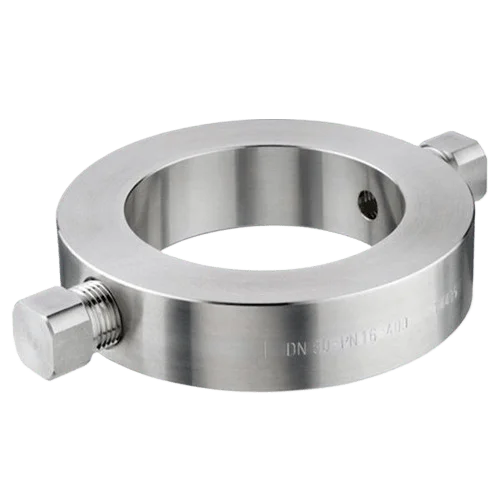Flushing Ring
A flushing ring is a circular metal device used to maintain the cleanliness of diaphragm seals. It is installed between the diaphragm seal and the process connection and allows for the removal of buildup or debris during operation. The ring is equipped with one or more threaded ports—typically ¼-inch or ½-inch—that let cleaning fluid flow through, helping to clear the diaphragm surface and prevent clogging.
Description
A flushing ring plays an important role in maintaining efficient flow and minimizing clogging in industrial applications. It is commonly utilized in systems such as pipelines, valves, and reactors for effective maintenance and cleaning. Through its design, it allows cleaning fluids or gases to reach internal surfaces and remove accumulated materials. As a result, this cleaning action helps eliminate sediment and debris, thereby supporting uninterrupted operation and lowering the chances of blockages. Ultimately, flushing rings contribute to improved system reliability and extended equipment lifespan.
Key Features
- Efficient Cleaning: Flushing rings direct fluid flow to clean the internal surfaces, preventing clogging.
- Improved Flow: They maintain consistent flow by preventing material buildup, which reduces the risk of blockages.
- Durable Construction: Made from corrosion-resistant materials like stainless steel, these rings are reliable even in harsh environments.
- Easy Installation: Their design allows for quick and simple installation, minimizing downtime.
- Versatility: Flushing rings are suitable for various applications, including chemical processing, water treatment, and oil and gas industries.
Applications
- Chemical Processing: They help prevent material buildup in reactors and pipelines, ensuring smooth chemical flow and reducing contamination risks.
- Water Treatment: In filtration systems, flushing rings remove debris and sediments that can affect water quality and filtration efficiency.
- Oil and Gas: These rings clean pipelines and valves, preventing clogging from thick oils and other substances.
- HVAC Systems: Flushing rings maintain consistent flow and prevent sediment accumulation, ensuring optimal performance.
Benefits
- Prevents Clogging: They remove debris and sediment, ensuring a continuous flow of fluids.
- Enhances System Performance: By keeping internal surfaces clean, flushing rings help optimize overall system performance.
- Reduces Maintenance Costs: Their use reduces the need for costly repairs caused by clogging or system failure.
- Extends Equipment Life: Flushing rings prevent buildup, thus extending the lifespan of valves, pipes, and other components.
Conclusion
Flushing rings are crucial for preserving smooth flow and minimizing blockages in industrial processes. Moreover, their reliable and cost-effective design improves performance, reduces downtime, and extends equipment life. Whether used in chemical processing, water treatment, or oil and gas applications, these rings are crucial for ensuring smooth and uninterrupted operation. As a result, they enhance overall system efficiency and help minimize the likelihood of expensive maintenance or repairs.





